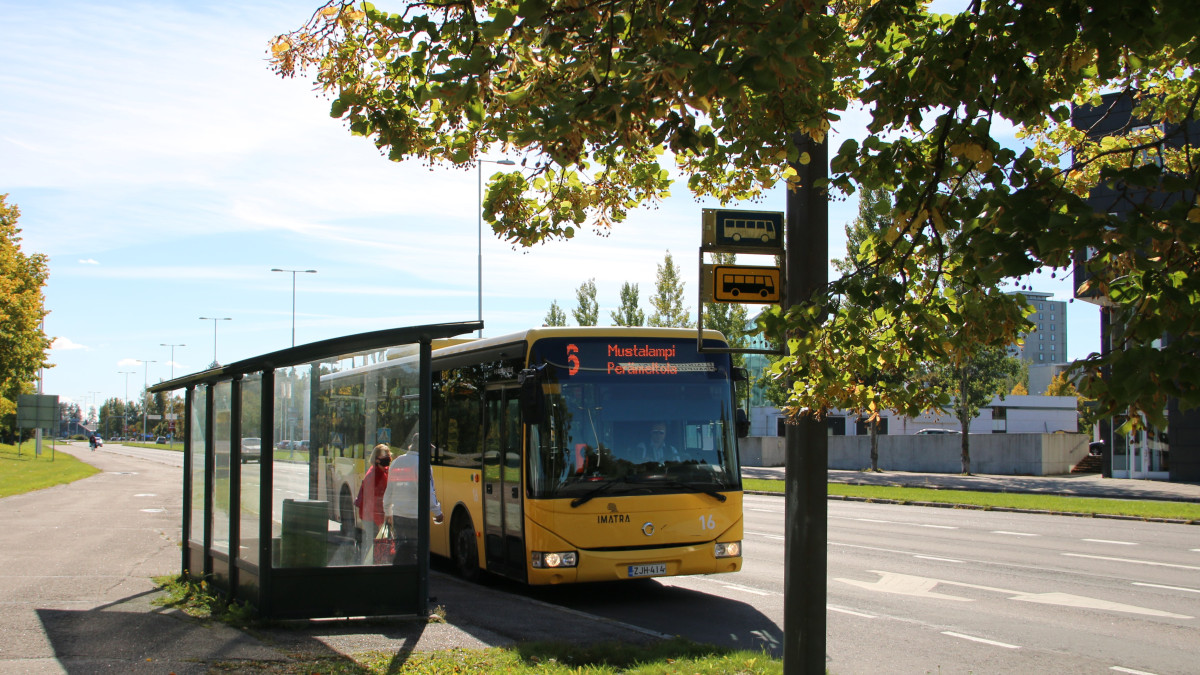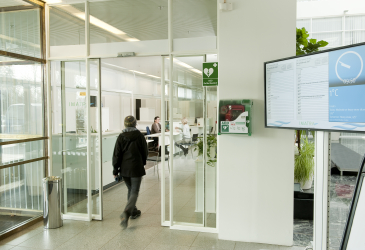
Schools and services can be reached by bus
Buses carry hundreds of passengers on Imatra every day: school children go to school, adults go to work, hobbies and services.
The goal is to serve as many of the municipalities as possible as well as possible.
It's quite a puzzle: planning schedules and routes is not easy, as there are many things to consider.
Emphasis on school centers
There are currently six bus lines running in Imatra's local transport.
Route planning is based on where people live.
- The lines emphasize functional transport connections to Vuoksenniska, Mansikkala and Koske school centers, traffic planner Kaisa Pohjola says.
Lines serving schoolchildren also benefit other passengers, as a large part of Imatra's shops, services and workplaces are located near school centers.
Someone always has to wait
The timetables are planned in cooperation with the schools, because the children have to get to school by bus in the morning and back home in the afternoon.
The goal is that there would be no long waiting times. Still, someone always has to wait.
-The school day for students of different ages starts and ends at slightly different times, for example, some are five minutes past the hour and some are ten minutes past the regular hour. Some will inevitably have to wait for the bus, but we strive to keep the time as short as possible, says Pohjola.
In addition to schools, other things must be taken into account in schedules. Buses have to reach, for example, long-distance buses and trains, and the daily rhythm of commuters must also be taken into account.
Ticket revenues cover a small part of the costs
Organizing public transport is not cheap. Ticket revenues cover about a fifth of public transport costs in Imatra. The rest will be paid for with state support and city funds.
Ticket prices are decided annually by the city council.
The price of an individual ticket varies depending on the type of ticket and where to buy it.
It is cheapest to buy a one-time ticket by loading value onto the city's own ticket card iLipu, the most expensive is to pay the ticket in cash on the bus.
- In this way, we want to encourage passengers to use our own ticket, Pohjola states.
The feedback indicates the need for change
Feedback on the functionality of public transport is given to the city at regular intervals.
It's good, because without feedback you don't know what needs to be changed. In the feedback, for example, better access to shops has been requested.
- As a result, we improved connections to Mansikkala and Imatrankoski, Pohjola says.
A new public transport marketing project is also being launched, in connection with which residents' opinions are also being asked.
-One of the goals of the project is to communicate things to customers even better.
Many ways to pay for a ticket
- iTicket
- on sale in buses and in the city hall's customer service
- the card can be loaded with money, single tickets or season tickets
- mobile applications PayiQ
- an application that can be downloaded to your phone
- single tickets and season tickets are on sale
- in cash on the bus
- ticket prices and other information: imatra.fi/jokkoliikken
The year of public transport 2020
- During the year, 243 trips were made
- Total costs 1,7 million euros
- Ticket revenue 0,326 million euros
- State aid 0,478 million euros
- The city's support is EUR 0,895 million
Once a month, Imatra opens the background of current affairs on this page. You can influence what topics are discussed. Answer the survey: imatra.fi/taustaslakymä

